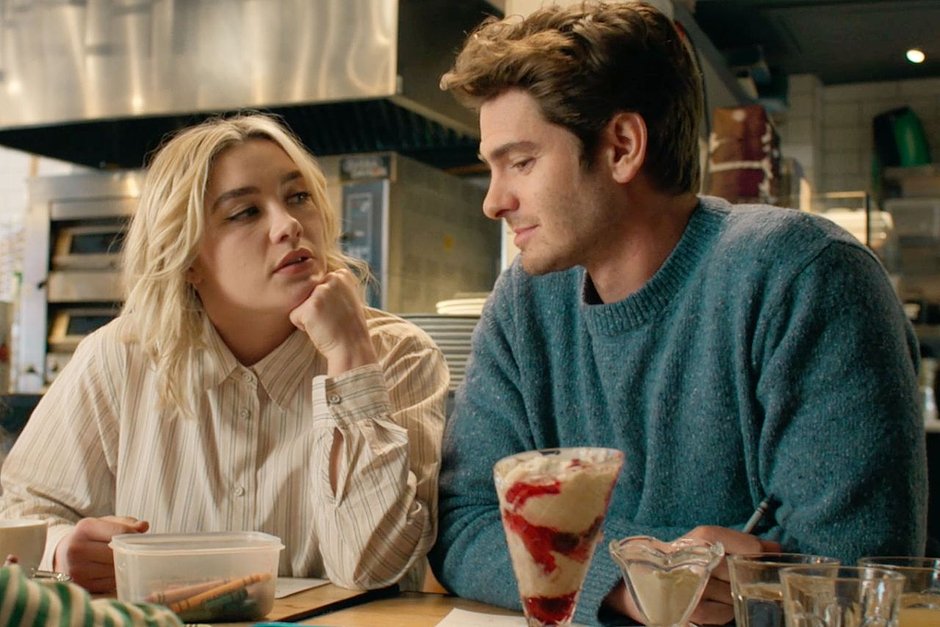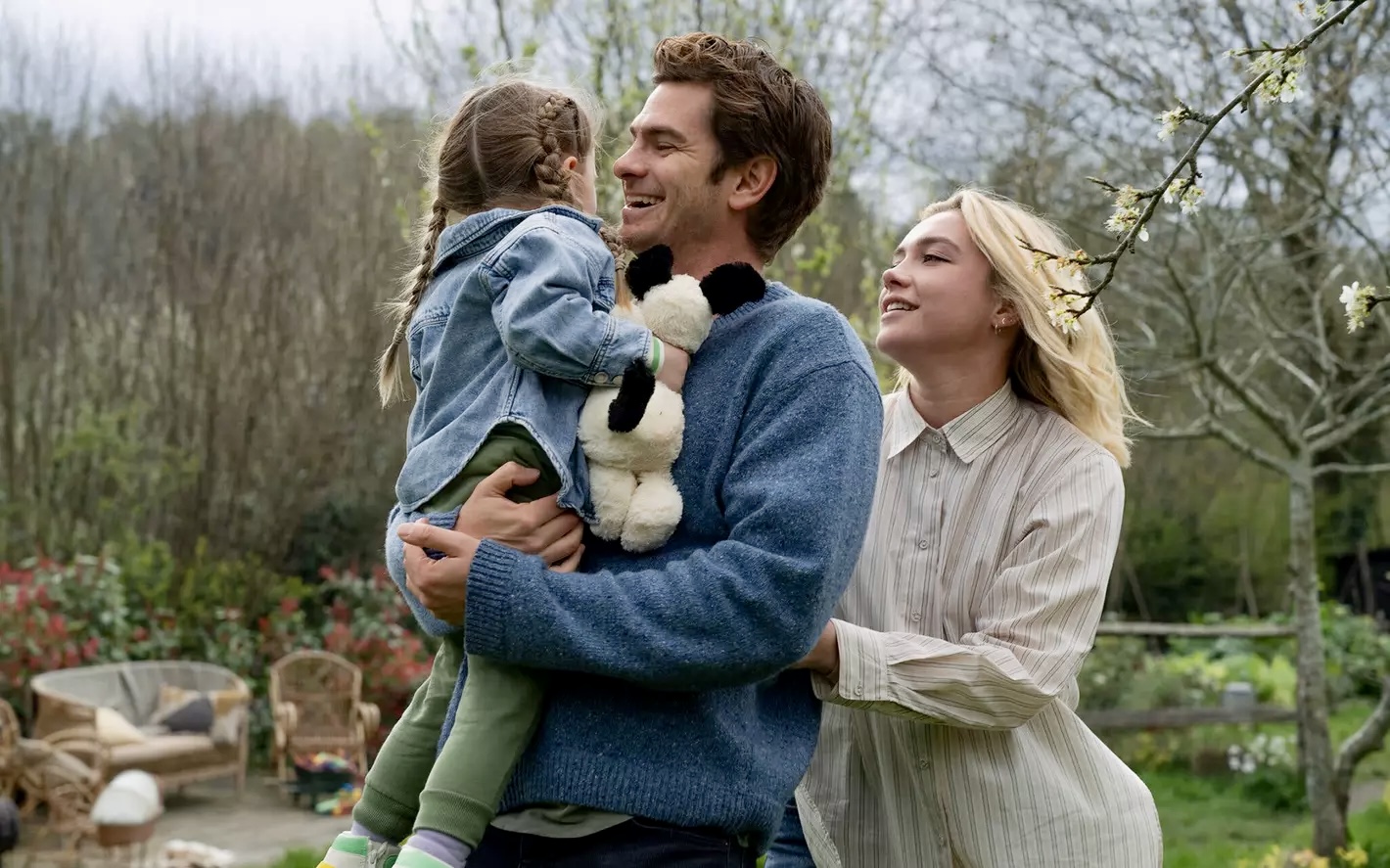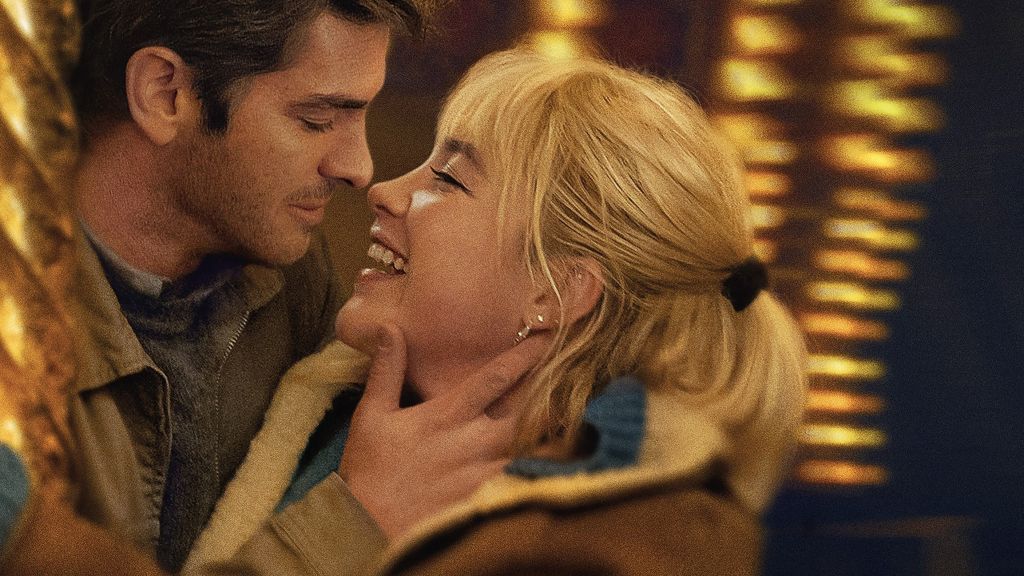The film A Time to Live, starring Florence Pugh and Andrew Garfield, was released this week. The film received positive reviews from critics and viewers: on Rotten Tomatoes, the film received a 78% critics and 85% audience score.
We also rushed to get acquainted with the new product, anticipating an exciting drama, where casual acquaintances grew into a love story filled with significant moments and fundamental factors. However, the film left us with many questions and conflicting impressions.
A Time to Live seemed promising, giving viewers hope for a powerful drama in the vein of One Day – a story of love, life and loss, where casual acquaintances turn into deep, touching connections. However, the film disappointed expectations.
Instead of turning into an exceptional drama, he turned out to be an external person with corny moves and strange accents. Break down the film into atoms. Here are the main problems of the film and why it did not live up to expectations.
Brief description
Non-linear plot: effect for the sake of effect
Superficial heroes: where is their development?
Strange accents and missing details
There are comedic moments here, but why?
The banality of the plot: in the traditional form – emptiness.
Critics deceived, audiences no longer understand good dramas
Non-linear plot: effect for the sake of effect

What is the film about?: The story of the chance encounter between Chef Almut and recently divorced Tobias, who is approved of a deep relationship. The plot non-linearly shows the key moments of their life together, joys and trials, with difficulties.
Like One Day, A Time to Live uses a non-linear plot. However, while One Day does this, showing how the characters change and develop year after year, here the jumbled chronology looks contrived.
It confuses rather than deepens the story, and makes the plot feel jerky and superficial. Instead of gradually revealing their lives, the film’s characters jump between scenes, sometimes forgetting to even explain their significance for the development of relationships. As a result, emotional tension simply weakens.
◦ Back to contents ◬
Superficial heroes: where is their development?

In One Day, the characters Dexter and Emma convey a long journey of good change. Their career, problems, personal ups and downs make them truly high. We see how they learn from mistakes and become better, and therefore we worry about them.
In A Time to Live, the main characters remain static. Tobias initially appears as a simple, down-to-earth character, and his character doesn’t change much.
All we see is his eternal suffering and tears, but this is not worth any growth. Almut, although she has shown herself to be bright and successful, rather causes bewilderment with her selfish behavior. There are no noticeable transformations in her, and her actions are not always clear and justified.
◦ Back to contents ◬
Strange accents and missing details

The film provides time for external scenes that are not relevant to the story. For example, a birth scene at a gas station, which should be memorable, is presented more like an absurd episode from a sitcom and does not affect the level of the characters’ relationship.
Here the film is literally divided into large episodes – dating, the birth of a child, diagnosis – but there are no everyday details that would create the impression of a long-term relationship. These accents, placed on the main events, make the story of life mechanical and meaningless.
◦ Back to contents ◬
There are comedic moments here, but why?

There is humor in A Time to Live, but it evokes mixed feelings. At some points, it seemed like the comedic elements were meant to lighten the mood and give the viewer a break in this story dealing with illness and life’s constant decisions. However, there is a feeling that the humor here does not discharge so much as it destroys the mood. It interferes with the perception of the tragedy rather than fulfills it.
There are a few scenes that were engaging because they were unexpectedly comical, such as the childbirth scene or the random episode with the restaurant magician that provided serious conversation. These scenes have a common tone, and their humor seems out of place in the twentieth dramatic story. Instead of deepening our emotional connection with the characters, such moments make their images more superficial.
Humor, of course, could be justified if it were used to reveal the humanity of the characters and their weaknesses – for example, as a way to show how they deal with their temperament or fears.
In the film “One Day,” light humor contributes to the development of relationships and creates a feeling of warmth and connection between the characters. Here, the comedy does not seem to be an organic part of the plot and distracts more from the central theme rather than its support.
Therefore, we can say that humor in the film is not entirely appropriate – it is like an alien element in the drama, where it was important to focus on conservative views and concepts about the meaning of life.
◦ Back to contents ◬
The banality of the plot: in the official form – emptiness.

Beneath the jumbled plot structure is a fairly inexpensive story. When non-linear editing suddenly infiltrates linear editing, it further enhances its banality. The story of tension and loss feels like a straightforward set of clichés about love and loss that we’ve seen many times before.
The title of the film, which hints at the value of time and the originality of moments, turns out to be deceptive, because the story itself does not reveal this theme in any way.
Moreover, the main characters call simply with surprise, she seems not only selfish, but also indifferent to how her behavior affects her loved ones. Her motivation leaves questions – career priorities in every third minute of illness are presented more like selfish impulses, rather than a desire to leave a memory of herself.
Yes, the story in A Time to Live is somewhat different than in One Day. Here the emphasis is on long-term relationships and the transformation of the characters on the topic of fighting the disease and the question: how to live the remaining time?
The plot focuses on Almut and Tobias facing the inevitable and trying to find meaning in their remaining days. The idea is good and it felt like it was going to turn into a deep and emotional story of values in every moment.
However, the problem is that the script forgets its own goals and reflects on its emphasis. Instead of delving into the complex inner world of the characters, showing their thoughts and fears of an incurable disease, the screenwriter presents what is happening during the events of seemingly random funny flashbacks.
Where the story should have been a deep reflection on choice, on living in the here and now, it becomes an incoherent series of scenes that simply record events without conveying their meaning for the characters. As a result, the film does not evoke the feelings that it sought to awaken, but seems to be a collection of random episodes with no emotional connection.
◦ Back to contents ◬
Critics deceived, audiences no longer understand good dramas
As a result, We Live in Time feels like an attempt to capture the success of films like One Day, but doesn’t reach the same heights. One Day has a powerful, poignant story, full of life, pain, and true real history.
Here we see a set of beautiful scenes, which, despite the excellent performances of Pugh and Garfield, does not evoke those oriental emotions that the creators thought so.
The high viewing ratings for A Time to Live remain a mystery to me. Yes, the film uses a beautiful picture and high-quality acting by Florence Pugh and Andrew Garfield, but, unfortunately, this is clearly not enough.
The plot is simple and accessible, without restrictions, which could truly care about the characters. The story creates typical cliche romantic dramas without adding anything new or touching. One gets the impression that the film is just a “beautiful wrapper” – visually attractive, but emotionally empty.
Source: Iphones RU
I am a professional journalist and content creator with extensive experience writing for news websites. I currently work as an author at Gadget Onus, where I specialize in covering hot news topics. My written pieces have been published on some of the biggest media outlets around the world, including The Guardian and BBC News.










